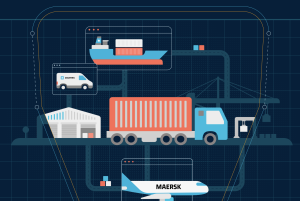 Modern procurement is about reaching out, collaborating and working together to allow innovation. Both the goverment and the business sectors, even suppliers, can achieve better results if they work together to drive and improve procurement process in their organisations.
Modern procurement is about reaching out, collaborating and working together to allow innovation. Both the goverment and the business sectors, even suppliers, can achieve better results if they work together to drive and improve procurement process in their organisations.
Speaking at the 3rd Smart Procurement World Conference Western Cape, Tennesse University Professor in Supply Chain Management, Kate Vitasek addressed delegates. Her presentation emphasised stabilising economies and driving business growth strategies in South Africa.
Procurement successes can be achieved if the negotiating parties choose to co-operate, solve problems and find easy ways to grow revenue that will result in win/win situations, said Vitasek.
Competition and capital are some of the ways to approach buying and selling. “Competition brings out the best result, and it keeps competitors on their toes,” she said.
She emphasised that partnerships are important because they assist in growing businesses and allow small businesses to play a vital role, as most of the revenue would be generated through them.
Vitasek discussed five rules of the business relationship game:
1. Outcome-based vs transaction-based business model
A transaction-based approach cannot produce perfect market-based price equilibrium in variable or multi-dimensional business agreements, such as global supply chains and complicated logistics arrangements. This is why organisations are exploring other types of sourcing business models, including outcome-based approaches.
2. Focus on the ‘what’ not the ‘how’
Another departure from the conventional approach: a company that is outsourcing specifies what it wants and moves to the service provider the responsibility of determining how the work is delivered.
3. Clearly defined and measurable desired outcomes
Once mutually agreed-upon desired outcomes are established by the parties, the important work of monitoring and measuring comes into play. This rule ensures that the parties know when they have achieved their goals by clearly understanding how to measure and monitor success.
4. Pricing model with incentives that optimise the business
A fair pricing structure is reached through co-operation, flexibility and innovative thinking. Inherent are rewards for service providers to invest in process, service or associated products that will generate returns in excess of the agreed requirements.
5. Insight vs oversight governance structure
Governance with insight, collaboration and flexibility is the vital component that makes all the rules work together effectively. A sound governance structure provides consistent management along with cohesive policies, processes and decision rights that enable parties to work together effectively and collaboratively. A governance framework enables the parties to manage performance and achieve transformational results throughout the life of the agreement.
“I have the coolest job in the world because I get to study successful buyer-supplier relationships and share it with procurement folks” – Kate Vitasek

























